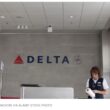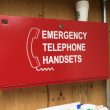Broadband plan to recommend D Block auction, public-safety funding
FCC officials detailed public-safety recommendations in the agency’s national broadband plan, including a commercial auction of the D Block spectrum, requirements to enable public-safety roaming across the entire 700 MHz band, and between $12 billion and $16 billion in federal funding to pay for a first-responder broadband wireless network.
FCC Chairman Julius Genachowski and Public Safety and Homeland Security Bureau Chief Jamie Barnett spoke to reporters today about “working recommendations” affecting public safety that are expected to be included in the broadband plan, which must be submitted to Congress by March 17. The plan will recommend a public/private partnership to make the public-safety network a reality, though the partnership is different than the one the FCC pursued in the failed 700 MHz D Block auction two years ago.
One of the biggest differences is proposed federal funding. The national broadband plan will recommend that Congress allocate between $12 billion and $16 billion over 10 years for a grant program that would allow public safety to build out its wireless broadband network on the 10 MHz of spectrum licensed to the Public Safety Spectrum Trust (PSST) in concert with commercial carriers’ LTE deployments.
“We have gone too long with too little progress to show for it — the private sector simply is not going to build what the country needs in terms of a public-safety network,” Genachowski said. “Unless we act, we won’t have a nationwide, state-of-the-art, interoperable broadband network for public safety that we need as soon as possible.
“The bottom line is that, if we want to deliver on what our first responders need to protect our communities and loved ones, public money will need to be put forward to tackling this national priority.”
When asked whether such appropriations from Congress are realistic, Genachowski described the proposal as “ultimately doable.” Barnett said FCC officials have spoken with members of Congress on the matter and have received “good feedback.”
“I think [lawmakers] are looking for something that is technologically feasible,” Barnett said. “We’re not going to pull any punches and tell them that ‘you can do that on a dime.’ It’s going to take some money, if you really want to address that.”
Although national public-safety organization have united around reallocating the 700 MHz D Block for public-safety uses, the plan will recommend that the spectrum be auctioned to commercial operators as current law dictates. The plan would call for the D Block winner and other commercial carriers operating in the 700 MHz band — most notably, Verizon Wireless and AT&T Mobility, which dominated the 700 MHz auction conducted two years ago — to deploy LTE networks and provide roaming and priority access to public-safety users.
“Rather than solely focusing on just the D Block … public safety isn’t limited to 10 or even 20 MHz of spectrum, but could have access to as much as 80 MHz under these arrangements,” Genachowski said.
Barnett acknowledged that there would be “various levels of disappointment” within the first-responder community that the D Block is not being reallocated to public safety.
“With the D Block and no funding, there’s no national network. But with funding and not the D Block, there is,” Barnett said. “The most crucial to me is to make sure we have the national network, so we’re recommending the funding.”
In addition to the national public-safety broadband network, the national broadband plan will include recommendations designed to enable next-generation 911 and emergency-alerting systems. In terms of next-generation 911, the plan calls for a study to be conducted, so accurate funding recommendations can be provided to Congress in the future.
Updated 2/25/10, 3 p.m. EST

















